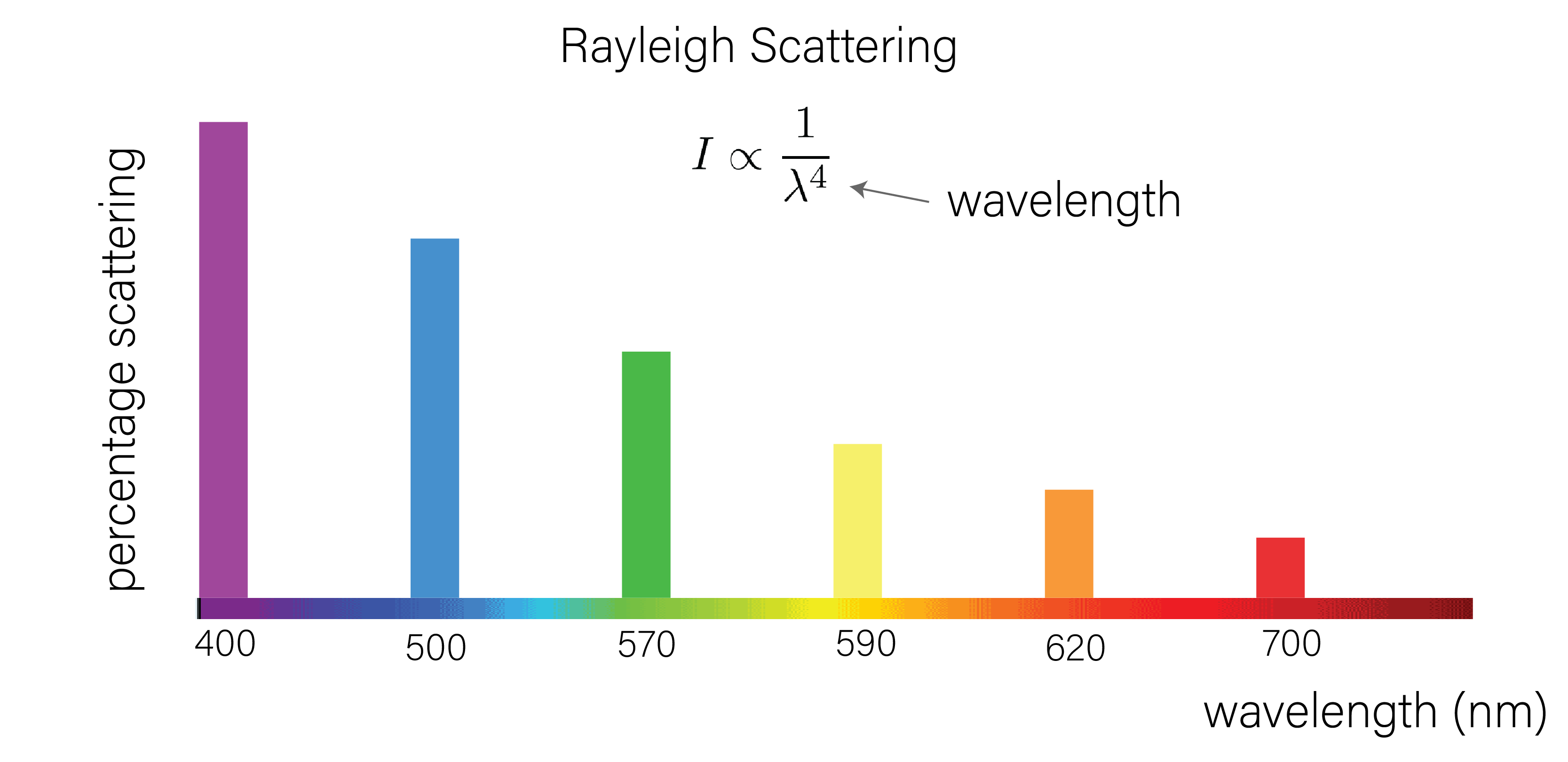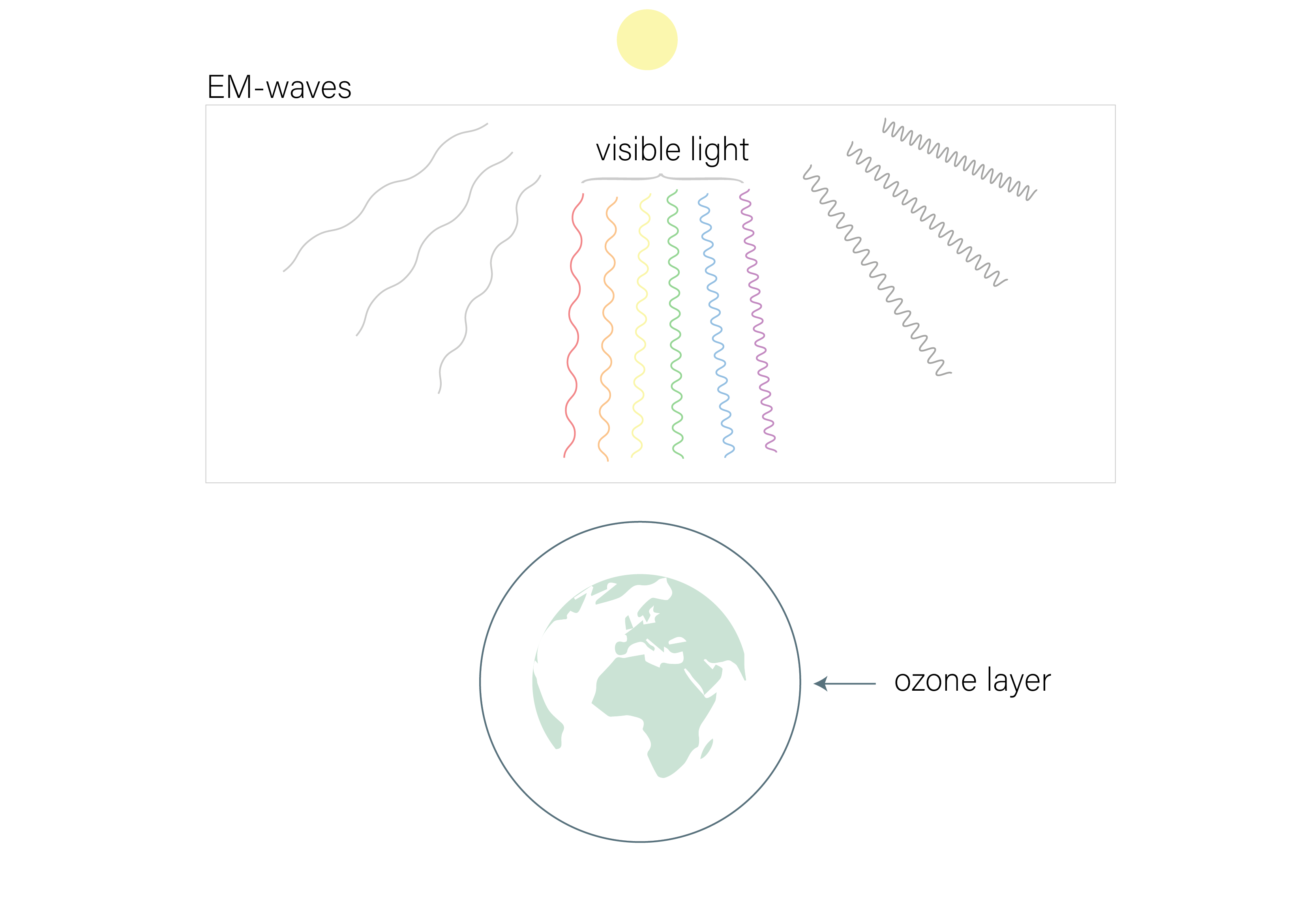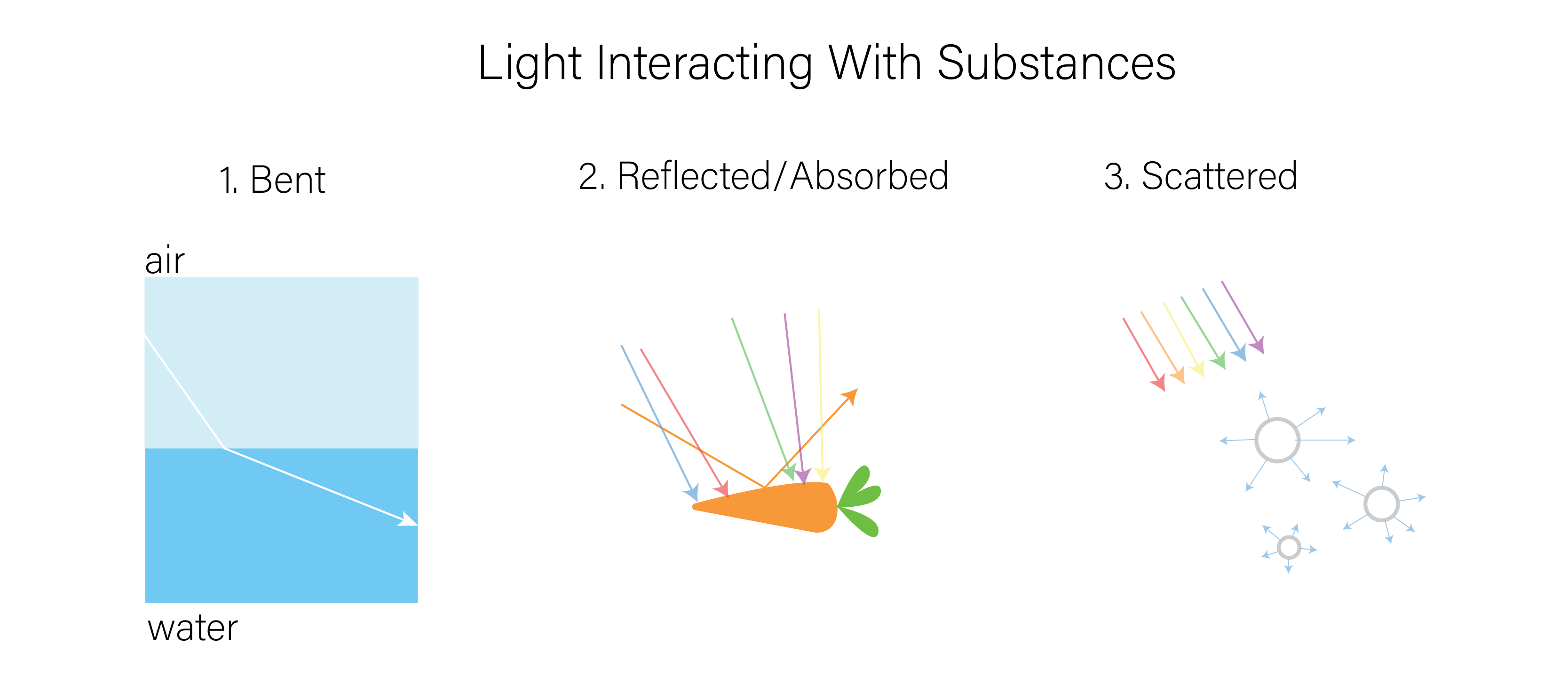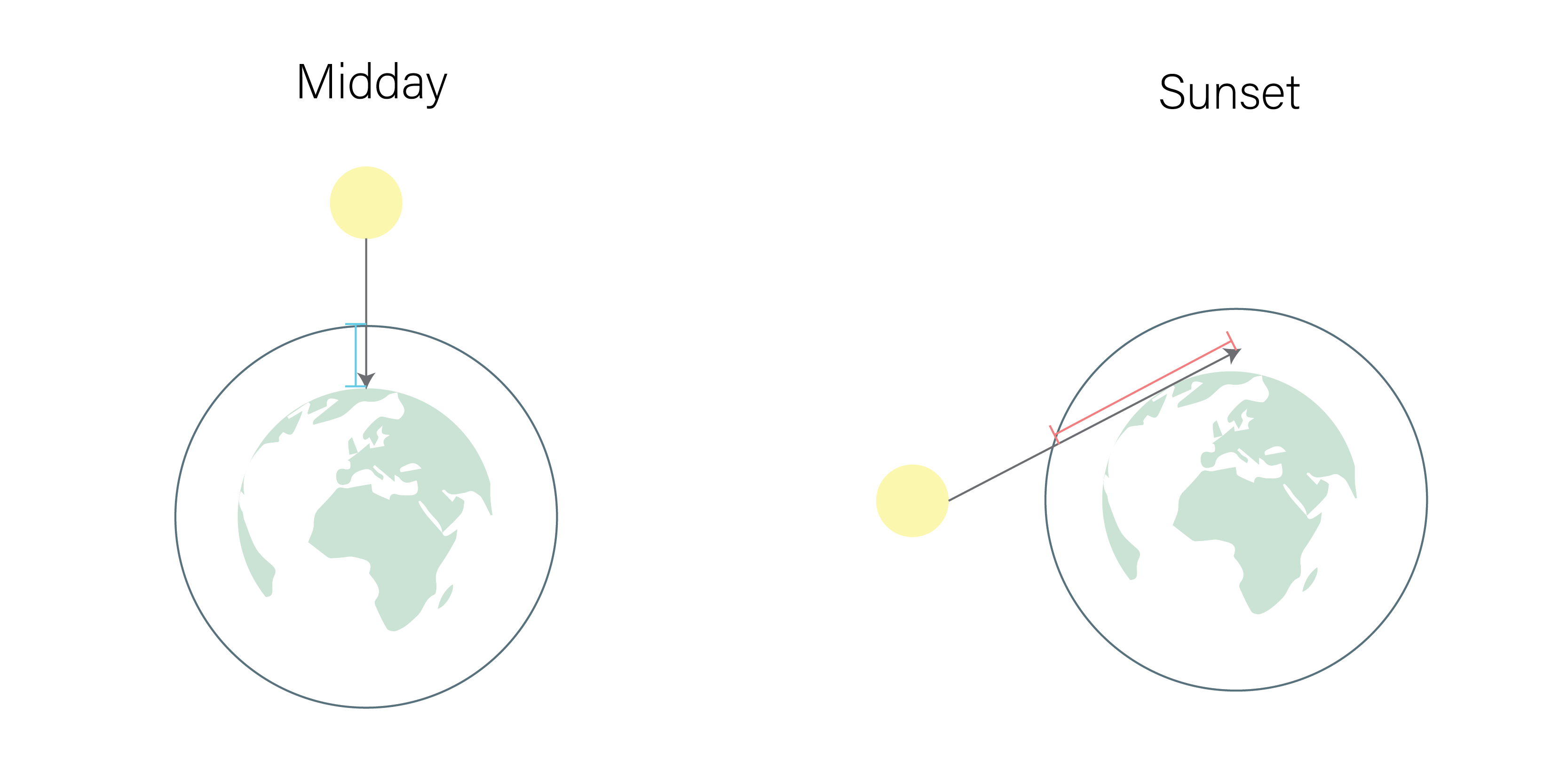
Why is the Sky Blue?
By the end of this lesson, you should be able to:
- Be able to identify the phenomena that make it so the sky looks blue.
- Be able to understand why the sky looks red/orange during sunset.
Why is the sky blue? The question has likely lingered in the back of all of our minds at some point in our lives, but most of us do not know the answer! Let us explore this phenomena in more depth.
The sun is an incredible source of energy. This energy is emitted in the form of electromagnetic (EM) waves, all of which have different wavelengths (as shown in the image below). In this article, we will focus on visible light, which are the EM-waves that have wavelengths in the range of 380-700 nanometers!

The waves that make up visible light are particularly important because when these wavelengths reach the human eye, the human eye sees different colors! The human eye has 1) rods that distinguish different shades of light and intensity and 2) cones that disentangle color. These sensors help the human eye process visible light!

So, as all this visible light travels from the sunlight into the atmosphere into our eyes, how come we don't see all colors of the rainbow? The answer to this question has to do with how light interacts with different substances. When light interacts with objects, it can do a number of different things. When it travels from one medium to another (like air to water), it can bend. When it hits solid objects, it can be reflected or absorbed. And finally, when it interacts with tiny particles (or molecules), it scatters!

Self-Test
What do you think happens to light when it hits our atmosphere? (Hint: our atmosphere is made up of tiny molecules)- a.) It bends.
- b.) It is reflected/absorbed.
- c.) It scatters.
The Earth's atmosphere is made up of lots of molecules! In particular, about 78% of the Earth's atmosphere is made up of nitrogen, 21% oxygen and the remaining 1% other things. This means that when sunlight enters our atmosphere, it begins interacting with a bunch of molecules. This means that visible light will be scattered!

But why then, does our sky only look blue? According to Rayleigh Scattering, the percentage of scattered light is inversely proportional to the fourth power of the wavelength.
Self-Test
Purple and blue wavelengths (380-490 nm) are much shorter than orange and red wavelengths (590-720 nm). According to Rayleigh scattering, should the percentage of purple and blue light be higher or lower than the percentage of orange and red light?- a.) More.
- b.) Less.
- c.) Equal.

We can see that we can expect blue and purple light to be scattered much more than orange and red light. If this is the case, then why do we only see blue—and not purple—skies? The answer is two-fold: 1) the sensors in our eyes are not as sensitive to purple wavelengths and 2) the sun does not emit as many purple wavelengths itself. So this Rayleigh Scattering phenomena means the visible light that makes it to our eyes, is the blue light that has been scattered by the molecules in our atmosphere!
A natural next question to ask would be: why do we see an orange/red sky at sunset? The answer has to do with how long a distance the light must travel through the atmosphere to reach our eyes! During midday, the distance the light has to travel to us (through the atmosphere) is much shorter than the distance it has to travel to us during sunset.

If the blue light is scattering every time it interacts with molecules, after some point, there will be no more blue light left to scatter. Thus, no blue light will reach your eyes. Since the red and orange light is scattering much less (according to Rayleigh's Scattering law), there will still be some of it left to scatter after traveling some distance through the atmosphere. It is these red and orange wavelengths that eventually reach your eyes during sunset. We can see this phenomenon in the figure below.

This explains why the sky becomes a reddish/orange hue at sunset!
Summary
In summary,
- The sun emits visible light that enters our atmosphere.
- Interaction of visible light with molecules in the atmosphere causes the scattering of blue light.
- This blue light is what we see when we look up to the sky.
- The sky appears orange and red at sunset because the blue light has scattered so much that only orange and red wavelengths are left when they reach your eye.
Some Additional Food for Thought:
- Why are clouds white?
- How do rainbows work?
- How does air pollution or other molecules in the air change the color of the sky?.


